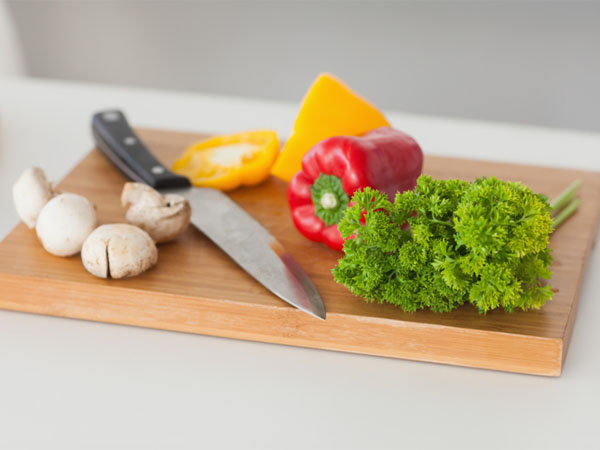Preventing cross-contamination is an important way to reduce the spread and growth of bacteria. It occurs when juices from raw meats or germs from unclean objects touch cooked or ready-to-eat foods. By following a few simple steps as you shop, store, cook, and transport foods, you can greatly reduce your risk of food poisoning.
Step 1: Shop Safe
- Wrap raw meat, poultry and seafood in plastic bags from the produce department to prevent juices from leaking onto other foods, and choose packaging that is well sealed and not leaking.
- Separate fresh or frozen, raw meat, poultry, seafood and eggs from produce and ready-to-eat foods in your shopping cart.
- To transport groceries, place meat, poultry and seafood in plastic bags to prevent juices from leaking.
- Pack meats, seafood, poultry and eggs in a different shopping bag or tote than other foods. While you're at it, pack frozen and refrigerated foods separately from room temperature foods. This helps keep cold foods chilled until you get home, and it simplifies unpacking too.
Step 2: Store Safe
- When storing food, refrigerate or freeze groceries within two hours.
- Prevent juices from meat, poultry and seafood from leaking onto other foods by storing them on the bottom shelf of your refrigerator in individual plastic bags or in their own containers.
- Keep eggs in their original disposable carton on the shelves, instead of in the refrigerator door.
- Store fruits and vegetables in individual plastic bags in the produce draw. This keeps them safe from yeast, mold and microbes that may lurk in the drawer.
- If you normally wash produce when you get home from the supermarket, make sure to store it in fresh, clean bags instead of the original ones.
- Store reusable totes in a clean, dry location and wash frequently with hot, soapy water or in the washing machine. Avoid leaving reusable totes in the trunk of a vehicle.
Step 3: Cook Safe
- Wash your hands with warm, soapy water for 20 seconds before preparing food. And wash them again before and after handling raw meats and foods, as well as between tasks.
- Be aware of the tools used during cooking — never use the same knife for raw meat, poultry or seafood to chop produce or ready-to-eat foods. Also, use one utensil to taste and a different one to prepare food.
- Investing in two different cutting boards, one for produce and one for raw meat, poultry and seafood can go a long way in preventing cross contamination in your kitchen. Since grooves from old cutting boards can harbor bacteria, replace cutting boards as soon as they become worn.
- Place any unused, washed produce into clean storage containers, not back into the original ones.
- Marinate raw meat, chicken or fish in the refrigerator, not on the counter. If you want to brush marinade on cooked meat, set a small amount of the marinade aside before you add it to the raw meat. Then later, when you brush it on use a fresh, clean brush. Toss out leftover marinades from grilled meat, chicken or fish — they can be swimming with bacteria.
- Wash plates between uses or use separate plates: one for holding raw meat, poultry or seafood and another for cooked foods.
- Stirring spoons, serving forks, slicing knives and plates used to hold raw food can be coated with bacteria. Be sure to replace or wash soiled utensils and plates as soon as they come into contact with raw food, and always serve cooked food on a clean plate.
- Keep dishcloths, counters and other surfaces clean.
Step 4: Transport Safe
- Lunch boxes and bento boxes can harbor bacteria too. Keep them clean by washing them with warm, soapy water after each use.
- Keep foods at the proper temperature by using thermal containers and cold packs.
Play it safe—to reduce the risk for food poisoning, separate meat, poultry, fish and eggs from other foods. According to the Centers for Disease Control and Prevention, 85% of all foodborne illness could be prevented if people handled food properly.
Find a Nutrition Expert
Looking for credible nutrition information and recommendations? The Academy of Nutrition and Dietetics' network of credentialed food and nutrition practitioners are ready to help!
